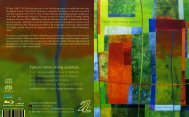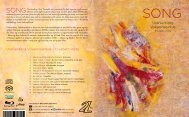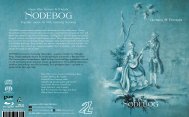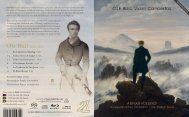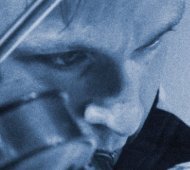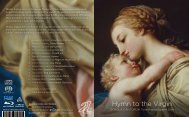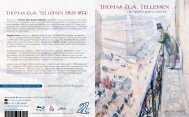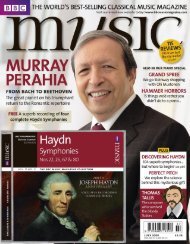Create successful ePaper yourself
Turn your PDF publications into a flip-book with our unique Google optimized e-Paper software.
Haarklou also had ambitions as a composer of<br />
opera. Unlike many of his colleagues, he managed<br />
to get most of them performed, but not without<br />
a struggle. The opera Væringene i Miklagard<br />
(The Varangians in Mikla gard), for example, was<br />
turned down several times by the National Theatre.<br />
He argued convin cingly that Norway needed<br />
a national opera, and in 1908 he used an opera<br />
pamphlet to chastise the National Theatre for its<br />
lack of responsibility towards Norwegian opera.<br />
Haarklou was prolific and composed in the major<br />
genres, but this was still not enough to persuade<br />
parliament to grant him a state salary. In a fiery<br />
parliamentary debate it was argued that he was a<br />
farmer’s son who “had worked his way out of the<br />
straitened circumstances that are the result of being<br />
born and bred in an isolated hamlet, and had forged<br />
ahead on the difficult paths that an artist in this<br />
poor country must travel if he is to achieve the<br />
position, acknowledged by all, of master”. It was<br />
to no avail. Haarklou received stipends from year to<br />
year, but it was not until 1910 that he secured<br />
a state salary. By that time he was 63 year old. The<br />
following year he was appointed Knight of 1 st class<br />
of the Order of St. Olav, and in the last years of his<br />
life he finally achieved recognition for his contribution<br />
as a conductor, organist, critic and writer.<br />
In Haarklou’s oeuvre of nearly 130 works, his<br />
romances and songs have a relatively modest place.<br />
They appeared in collections at intervals of several<br />
years, and it is obvious that he has tried to find his<br />
own style, independently of Halfdan Kjerulf and<br />
Edvard Grieg, whom posterity remembers as<br />
Norway’s most significant composers of romances.<br />
Most of Haarklou’s songs were composed in the<br />
1890s and the early 1900s. For lyrics he chose wellknown<br />
contemporary poets, as well as Bjørnson and<br />
Welhaven. Sigurd Bødtker (1866–1928) was a<br />
lawyer and theatre critic whose collection of poems,<br />
entitled Elskov (Love), created such a furore that<br />
he was excluded from the university for one year.<br />
Peter Johnsen (1857–1929), a journalist and author,<br />
published a collection of poems in 1891. Wilhelm<br />
Krag (1871–1933) was a fashionable poet and wellknown<br />
intellectual of his time whose poetry often<br />
shifts from spontaneous joy to deepest sadness.<br />
Per Sivle (1857–1904) and Knut Hamsun (1859–<br />
1952) provided Haarklou with poems about nature<br />
and love.<br />
Haarklou’s published works are numbered in<br />
order of publication. In his biography of Haarklou<br />
(1961) Finn Benestad has therefore compiled a<br />
chronological list of works which is used in this<br />
CD in addition to the original opus number.<br />
It was Haarklou’s ambition that the songs<br />
should also be sung outside Norway and he<br />
therefore published them with German lyrics by<br />
Eugen von Enzberg (1858–1908), who translated<br />
a number of Norwegian poems into German.<br />
The melodies in Haarklou’s songs flow easily<br />
and shift between recitative and more prosodic<br />
forms. The piano accompaniment often has an<br />
independent role, and it is easy to hear that the<br />
piano introductions, figurations and underlying<br />
ambience are rooted in the content and atmosphere<br />
of the poems. In some of the songs the tonal colour<br />
of the piano is especially noticeable, as for example<br />
in the folk music-inspired introduction to<br />
“Haukeligauken” (The Haukeli Cuckoo) and the way<br />
the piano conjures up the purring cat. In the<br />
piano introduction to “Mainat” (May Night), the<br />
nocturnal atmosphere is depicted with dark and<br />
sombre chords, while the angel dance is illustrated<br />
in light and lively interludes. Haarklou seems at<br />
his best here and in “Hva suser i Natten?” (What<br />
sighs in the Night?) when depicting nocturnal<br />
atmospheres and loneliness.<br />
It was Haarklou’s intention that the music<br />
should follow the lyrical content closely. His<br />
songs therefore vary between strophic and more<br />
integrated, non-strophic form.<br />
In his songs from the early 1890s Haarklou<br />
is searching for new harmonic effects which can<br />
sometimes be explained as an emphasis of the lyrical<br />
content (as in the strange song “Tonen”). By the<br />
beginning of the 1900s Haarklou has arrived at<br />
a more serene and unified form. Particularly<br />
Knut Hamsun’s texts inspired to a simple, but<br />
nevertheless musically consummate form.<br />
Harald HerrestHal




